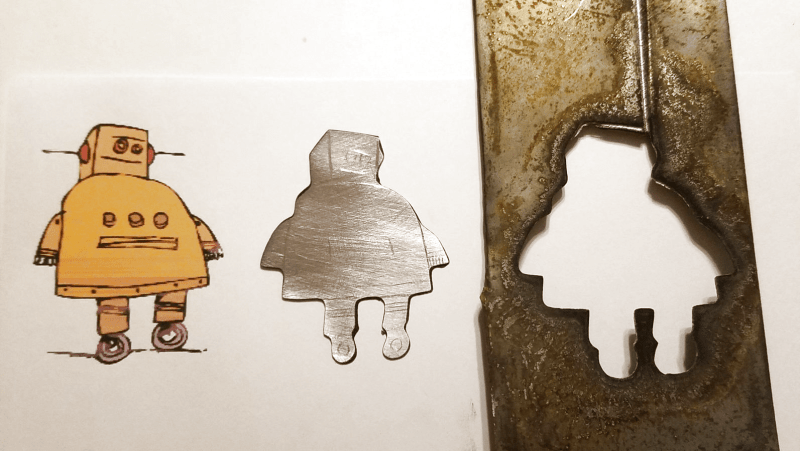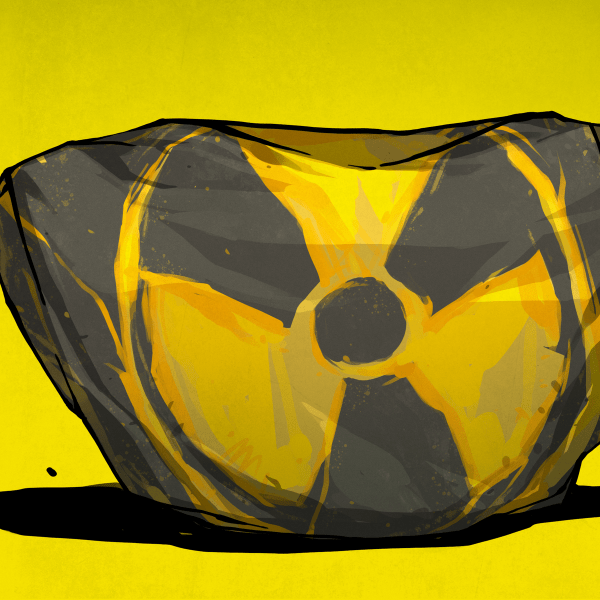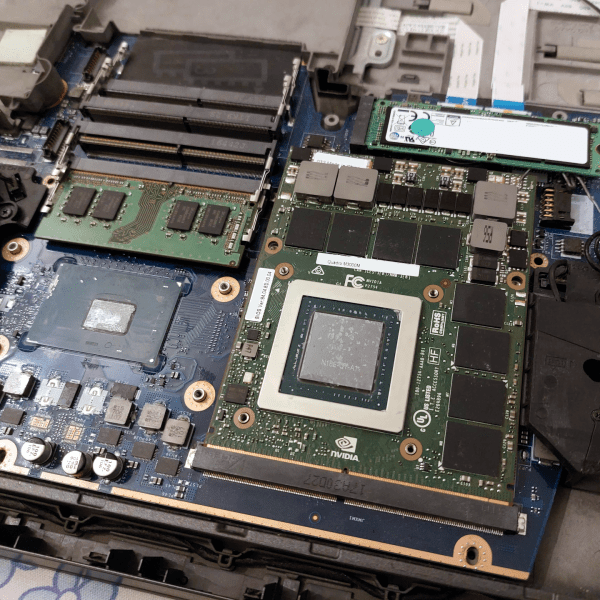Laser cutters, waterjets, plasma cutters, CNC routers – most hackerspaces and even many dedicated home-gamers seem to have some kind of fancy tool for cutting sheet goods into intricate shapes. But with no access to a CNC machine and a need to cut a complex shape from sheet metal, [AlchemistDagger] cooked up this bare-bones and somewhat dangerous EDM rig to get the job done.
Electric discharge machining has been around for decades and is used a lot for harder metals like titanium and tool steel. The process makes sense to anyone who has seen contacts pitted and corroded by repeated arcing – an electric arc is used to remove metal from the workpiece, with a dielectric fluid used to cool the workpiece and flush away debris. For [AlchemistDagger]’s purposes, a lot of the complicated refinements, like high-frequency power supplies and precise tool positioning, were ignored. He built a simple linear slide to manually control the tool position, and the power supply was just a bridge rectifier connected to the 120-volt mains with some filter capacitors and a big light bulb as a ballast resistor. While the video below shows electrical conduit being notched, [AlchemistDagger] also made a brass cookie-cutter style tool to cut the Instructables logo from steel.
Obviously, mixing water and electricity is a recipe for disaster is you’re not careful, but this low-end EDM technique is a good one to file away for a rainy day. And if you’re looking for a little more sophistication in your homebrew EDM rig, we’ve got you covered there too.

















I was reading the manual for our Charmilles the other week. Apparently, EDM has been around commercially since the early 50’s. (!)
It’s used a LOT in the tool and die world.
I only know it from a company that i worked for that makes high precision micro-drilling machines based on EDM process down to 50um bore diameters. AFAIK they get used a lot to drill fuel injection nozzles and stuff like that.
Finally!! There used to be some “alternative technology” site that had a lot of “ebooks” of mostly bogus stuff on it but the thing that I know that worked was the EDM, and it used a lightbulb just like this project. The problem was, I lost the plans 2 days right after that as my hard drive crashed, hard. With no bookmarks and no email(I was using POP3), I was never able to find those same plans again(though I did find others, just not with the bulb).
BTW, just in case anyone knows what site I’m talking about, it used .exe files instead of making them an actual ebook(PDF was still kinda new at the time as I recall). The only other book I recall told how to build a “turbine” jet engine but it was far from turbine, jet or engine. It mostly said “use a cone at the entrance of a long barrel that has a more narrow exit”. If you know the site, I’d love to see it again as it was a good laugh.
And it just so happens that I did another slightly more indepth search and I found it finally. You’ll be able to figure out the bad ideas pretty quickly.
http://www.alternative-technologies.org/tools.php
I have been thinking about adding an EDM head to my CNC machine. the place I was working had a couple of big EDM machines and when we changed out the fluid I managed to get my hands on about 20 liters. Out machines used a special blend of Kerosene and Seal Oil. Seems to work a lot better than distilled water and you dont seem to get the brown muck.
yes it is a fire haszard and if you decide to use it best keep a fire extinguisher on hand BUT it makes for a much cleaner cut.
EDM and seal oil?
Both involve clubbing.
That had the makings of a rather dark Dad-joke .. I would spring it on one of my kids, but I’m afraid the metal-working aspects would be lost on them.
My old professor used to call shear stress matrices “tautologies”
One place I worked at had a fire on a brand new mitsubishi EDM. Guy didn’t hear the fire alarms because he had headphones in. Darn near cost as much as a new machine to fix that one.
Wonder how well it would work for making DIY PCBs. Most likely using far less than 120V to make precision cuts rather than blowing chunks out of the copper.
Why are people constantly on the lookout for worse ways to make a PCB? We anyway have some great ways to make PCBs that are far better than this could ever be.
I saw a goat take a piss this morning. I looked corrosive and stinky. I wonder if it could piss away copper from a PCB?
Heh, get some really heavy duty etch resist and mount the board as a pee target in the toilet/urinal for a week or so…. :D
Good argument. And the problem is, what all that “alternative” ways of PCB “etching” can’t do: Decent plated through holes (vias). I somehow miss the solder stop mask on milled PCBs, but I really miss useful vias. Without plated vias it is technology that got stuck in the 80ies, when I etched my first PCBs: hand painted and with HCl and H2O2 AND NO PLATED VIAS.
well nice… but how fast is this thing? How fast does it chew through 1mm thick steel in mm/hour? If I want to build this thing I “must” know how fast it will go. (I’m sure I overlooked this spec.)
EDM is *slow*. However slow you think it is, it’s slower than that.
The reason for using it is it cuts through materials other machining techniques cannot.
EDM It’s very messy thing if you working with graphite electrodes which has to be milled on a CNC, left the company in the ’90 before I designed first electrode, feel sorry for the machinist on the EDM and one on the CNC.
Smart enough to build an EDM rig, not smart enough to turn the camera 90 degrees.
https://www.youtube.com/watch?v=Bt9zSfinwFA
arrghh. I’ve actually seen someone post five photos (in portrait setting)of a chainsaw, instead of just turning the damned phone and getting it all in one frame.
I love my edm, of course I didnt build it, but I did rescue it after it was disposed of for scrap by the company that owned it after being fed 415vac instead of japanese standard 200vac (its a 200vac 3 ph supply machine and lost the neutral out of its autotransformer setup so saw raw input voltage on the output) and eating quite a lot of its innards.
It runs now, I do have $600 in it and the 110v transformer is a UK building site 220->110 adaptor along with lots of other scrounged or incorrect parts but it works. I’m part way through building a stainless spindle axis from raw VDH dividing head castings to live in the worktank now for turn while burn…
Its cool to have your own private thunderstorm in a tank you can watch. Its slow though, really slow but you can cut things you can’t cut any other way. If a die sinker ever pop’s up that’ll be following me home too, not because I need one, but because I’m a toolaholic and need to serve my addiction…
http://gallery.pipandphil.com/d/38594-1/clutch_spline_test_insitu.jpg
holy moly the sound it makes on that pipe is fantastic
Should use caps rated for a higher voltage! After the bridge rectifier, the voltage they’ll see is higher than 120V.
DO NOT BUILD THIS CIRCUIT! The circuit as described on Instructables exposes the user to lethal voltages.